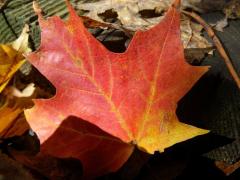Gardening Basics for Kids
Gardening Basics for Kids- Learning about native plants and gardening is for all ages. Check out these resources from Yard Care Gurus on gardening basics for kids.
Gardening Basics for Kids- Learning about native plants and gardening is for all ages. Check out these resources from Yard Care Gurus on gardening basics for kids.
Having a little spring fever? You're not alone. The Vermont Invasives team has been dreaming about planting gardens and, naturally, invasive plant control. Join us at the Vermont Flower Show March 3-5. You can find information on invasive plants and forest pests while being surrounded by beautiful flowers. Attend our workshop on the emerald ash borer Sunday, March 5th at 2:00 pm. Learn more about our invasive plant coordinator and her display!

Windham County Foresters, Sam Schneski and Bill Guenther, outline the threat of invasive plants on sugarbushes in Vermont. This article, published in the fall 2016 issue of Woodlot Tips, explains what makes a species "invasive", which invasive plants threaten Vermont sugarbushes, and offers management suggestions for landowners.

Some are disarmingly named, like the cutesy Chinese mitten crab. Others have names more indicative of their undesirable nature, like rock snot, an algae that slimes up cool forest streams.
They are some of more than 100 invasive species that conservationists must battle in New York State, which teems with a growing number of plants, birds, fish, insects, mosses, molds and fungi that actually belong somewhere else.
"Getting rid of invasive species is a Sisyphean task, and some ecologists have questioned whether the effort is worth it.... New findings from the Seychelles, an archipelago in the Indian Ocean, suggest that the hard work (and money) invested can pay big dividends for pollinators—including insects, birds, and reptiles—and for the native plants they assist."